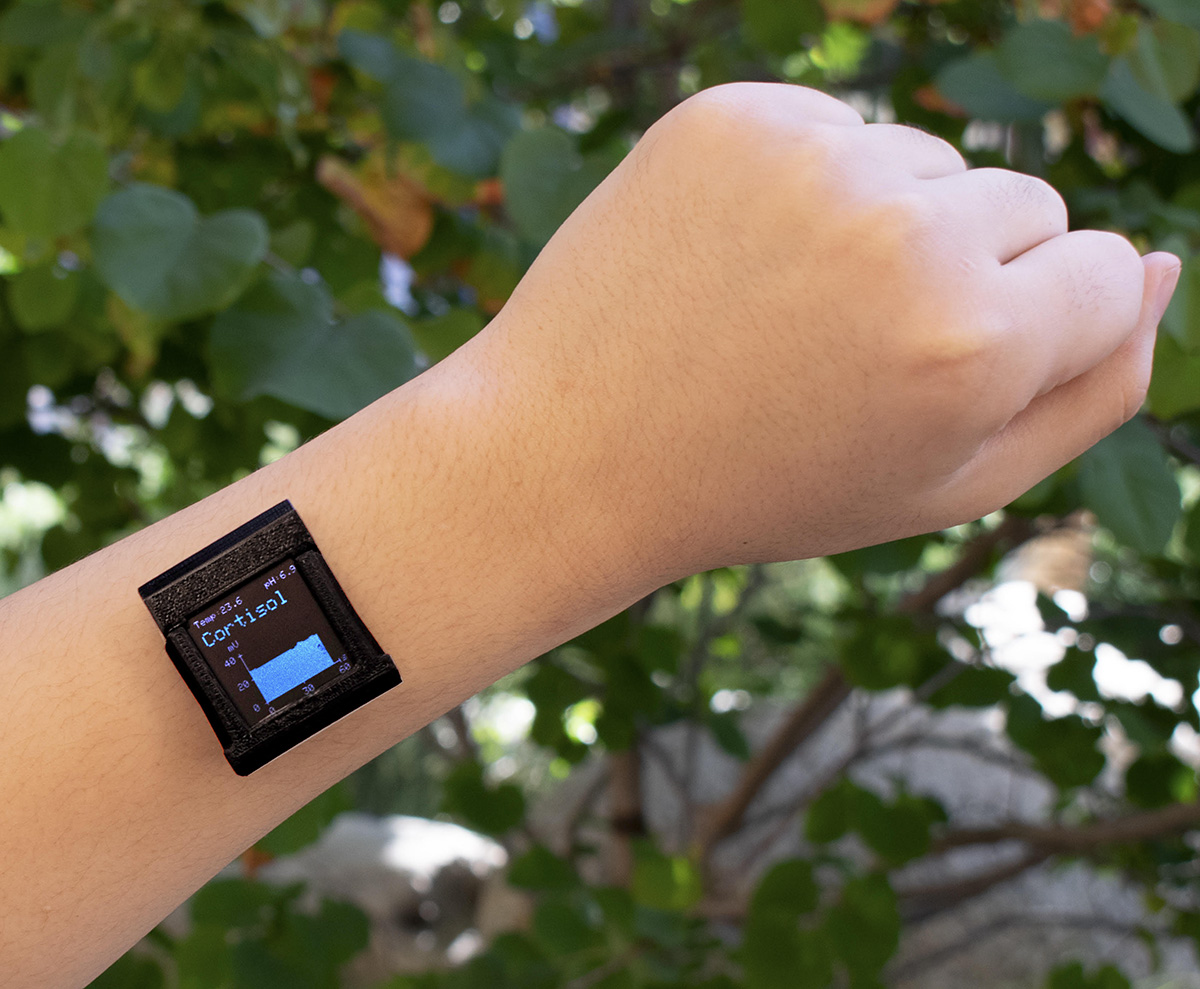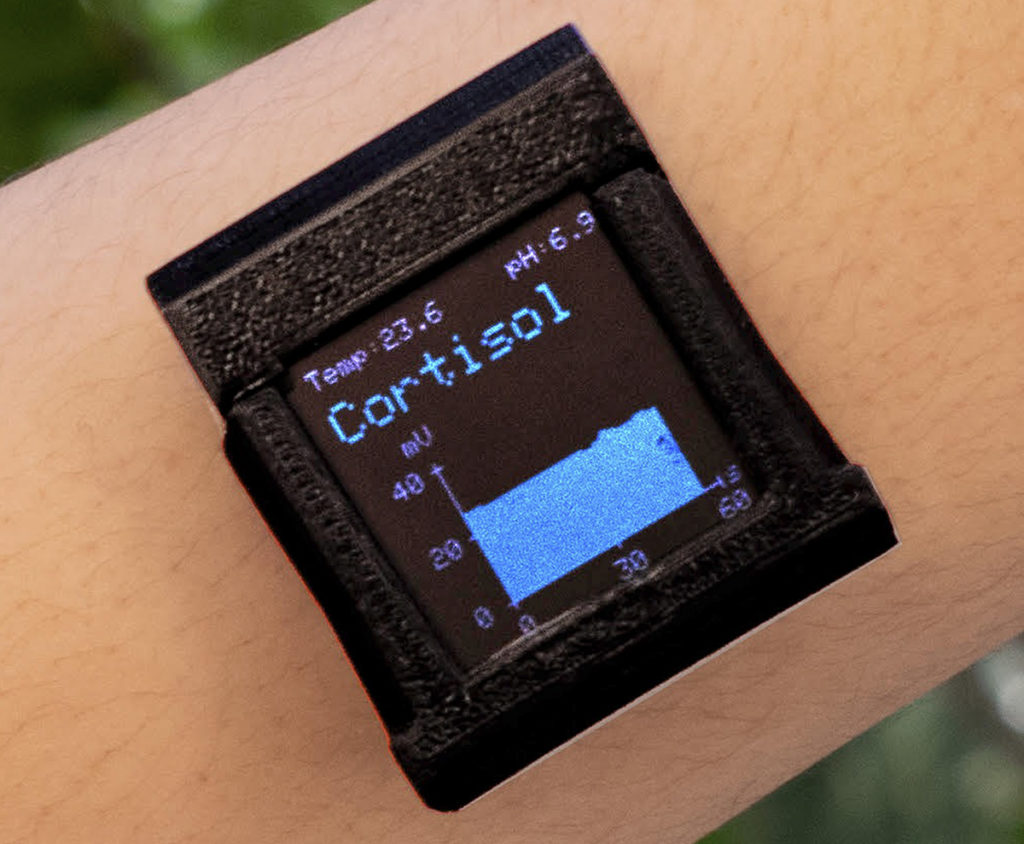UCLA researchers develop watch prototype that measures stress hormone levels

A smartwatch prototype (pictured) could detect levels of cortisol, a key stress hormone in an individual’s sweat, according to a UCLA study. (Courtesy of Chuanzhen Zhao)
By Myra Xu
April 9, 2022 3:22 p.m.
UCLA researchers recently developed a smartwatch prototype that can measure and interpret the amount of stress hormones in sweat.
The watch, as described in a Science Advances research article published in January, allows wearers to identify their stress levels.
The device is the first of its kind in directly detecting cortisol levels noninvasively and wirelessly, said co-author Bo Wang, a postdoctoral researcher in electrical engineering.
Co-author Chuanzhen Zhao, a postdoctoral researcher and former UCLA doctoral student, worked with co-corresponding author Anne Andrews, a UCLA professor of psychiatry and biobehavioral sciences, to develop a device known as an aptamer-field-effect transistor in 2018. This device uses a short piece of DNA that can capture cortisol, a key hormone involved in the feeling of stress. The transistor component of the device then amplifies the signal from the cortisol so that it can be detected directly through the watch.
The team is now working to adapt this device into a fully functioning, physical watch.
“You can think about it as it’s all in one watch,” Wang said. “You’re able to monitor and analyze everything in just one shot.”

Amanda Pineda, a second-year biology student, said she believes this technology is especially convenient for people who already own smartwatches.
“I think the idea of a watch measuring stress levels is genius because as an Apple Watch user, it does everything but that – measuring stress levels,” Pineda said.
The watch is able to support new types of biosensors that can monitor very low concentrations of cortisol that are not detectable with conventional sensors, Wang said.
The team also adapted previously established technologies from Sam Emaminejad, a co-corresponding author and associate professor of electrical and computer engineering, as well as other researchers to build the watch.
Wang said this technology could potentially be applied to other hormones with some adjustment.
“We definitely are very ambitious and excited to see how we can really move this forward to industry and the consumer’s hands when everyone can wear the sensor,” Zhao said.


